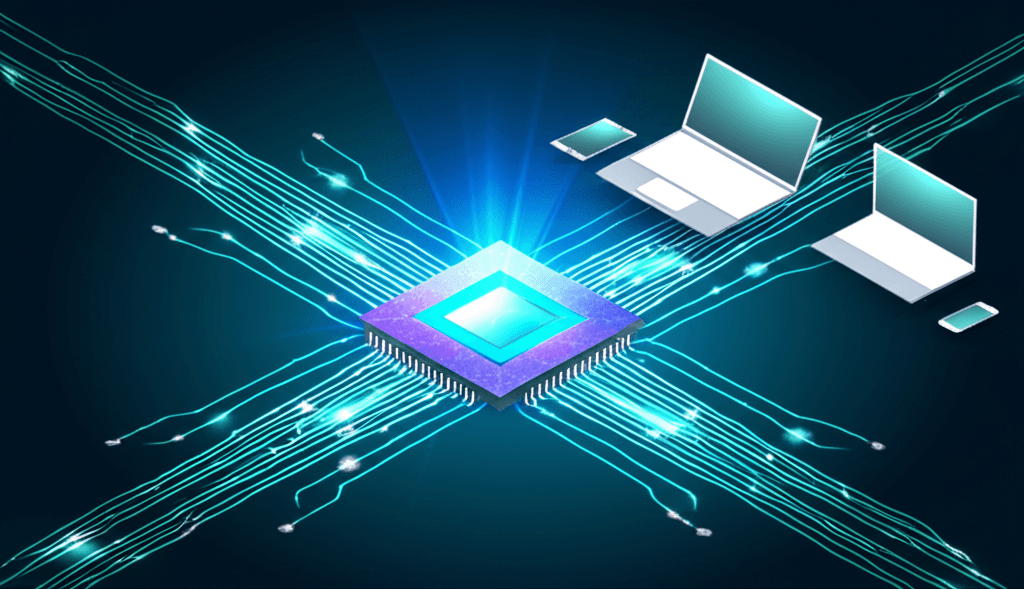Microsoft Unveils Tiny AI Model: 10x Faster Reasoning On Devices
Microsoft's compact Phi-4 model unleashes powerful, lightning-fast AI reasoning directly on your devices, heralding a new era of edge intelligence.
July 10, 2025

Microsoft has unleashed a new artificial intelligence model that promises to dramatically accelerate complex reasoning tasks on devices operating at the network's edge, a move poised to reshape the landscape of on-device AI. The new model, named Phi-4-mini-flash-reasoning, is part of the company's growing family of small language models (SLMs) and is engineered to deliver up to ten times the processing speed of its predecessors without a significant loss in reasoning quality.[1] This breakthrough enables more powerful and responsive AI applications to run directly on smartphones, laptops, and other resource-constrained devices, reducing reliance on cloud-based processing and opening new possibilities for real-time, logic-based applications. The development signals a major push by the tech giant to embed sophisticated AI capabilities directly into the hardware people use every day, a strategy that could have profound implications for everything from educational software to industrial automation.
At the heart of this performance leap is a novel architecture Microsoft calls SambaY.[1][2] This "decoder-hybrid-decoder" structure represents a significant technical innovation by combining the strengths of different AI model components to maximize efficiency.[1][2] The architecture includes a self-decoder that merges a State Space Model (Mamba) with Sliding Window Attention (SWA), alongside a cross-decoder that intelligently interleaves computationally expensive attention layers with a new, highly efficient component known as a Gated Memory Unit (GMU).[1] This hybrid approach drastically improves how the model processes information, enhancing decoding speed and boosting its ability to handle long strings of data, a crucial factor in complex reasoning tasks.[1] The Phi-4-mini-flash-reasoning model itself is a 3.8 billion parameter open model, a size that is notably compact compared to the massive large language models (LLMs) that run in the cloud.[1][2] Despite its smaller size, it is capable of handling a 64,000-token context length, allowing it to process and reason over substantial amounts of information.[1] This efficiency means the model can be deployed on a single GPU, making powerful AI more accessible for a wider range of developers and use cases.[1]
The development of such potent small models is a direct result of Microsoft's focused research on training methodologies. The company's work on models like Orca-Math, a 7-billion parameter model specialized in solving grade school math problems, demonstrated that SLMs could outperform much larger models when trained on high-quality, specialized data.[3][4] Orca-Math achieved an impressive 86.81% accuracy on the GSM8K benchmark, surpassing larger models like GPT-3.5.[3][5] This success was attributed to training on a curated synthetic dataset and an iterative learning process where the model essentially practices problems and receives feedback.[3][4] This philosophy of using meticulously curated synthetic data to enhance reasoning has been a cornerstone of the Phi model family's development. For instance, the Phi-4-mini-reasoning model was fine-tuned on synthetic data generated by another advanced model, Deepseek-R1, to bolster its capabilities, particularly in mathematical and logical problem-solving.[6][7] This strategy allows smaller, more efficient models to punch far above their weight, achieving performance comparable to models with tens or even hundreds of billions of parameters.[8][9]
The implications of bringing this level of reasoning power to edge devices are vast and multifaceted. For consumers, it could mean more intelligent and responsive personal assistants on their phones and PCs, capable of complex tasks without an internet connection, thereby enhancing privacy and reducing latency.[10] For industries, the applications are even more transformative. Real-time, logic-based applications in fields like manufacturing, finance, and logistics could see significant improvements.[11][8] Educational tools could become more dynamic and adaptive, with AI tutors running locally on a tablet to provide instant, personalized feedback.[1][9] Microsoft has already begun integrating variants of its Phi models into its Windows Copilot+ PCs, where they power features like offline email summarization directly on the device's neural processing unit (NPU).[8][9] This shift towards on-device processing aligns with a broader industry trend toward edge AI, driven by the need for lower latency, reduced operational costs, and greater data privacy.[12][10]
In conclusion, Microsoft's release of the Phi-4-mini-flash-reasoning model marks a significant milestone in the evolution of artificial intelligence. By developing a novel architecture and refining its training techniques with high-quality synthetic data, the company has managed to pack powerful reasoning capabilities into a small, incredibly fast package. This advancement is not merely an incremental improvement; it represents a strategic shift towards a future where sophisticated AI is not confined to massive data centers but is embedded in the devices we use daily. As these powerful small models become more widespread, they are set to accelerate the adoption of edge AI across numerous sectors, fostering a new wave of innovation in applications that demand speed, efficiency, and intelligence right where the data is generated. The move further intensifies the competitive landscape, where the ability to deliver powerful, cost-effective AI solutions that can run locally is becoming a key differentiator.[11][12]